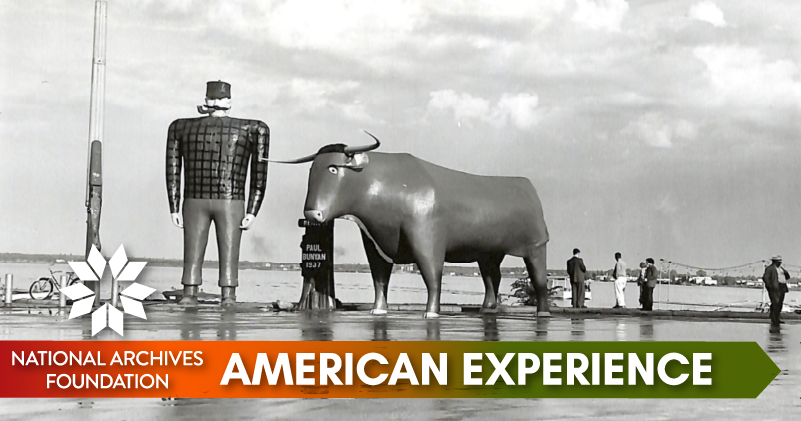My Fellow Americans…

Today we present a special all-video newsletter from the Archives of the most iconic presidential press conferences. Whether you were tuned in to the live broadcast or are seeing the footage for the first time, the Archives’ video holdings are a powerful way to relive history.

Patrick Madden
Executive Director
National Archives Foundation
The Briefing Room
On March 30, 1986, President Ronald Reagan gave a speech to the members of the ALF-CIO at the Washington Hilton Hotel. He and his entourage were heading toward the presidential limousine outside the hotel when 25-year-old John Hinckley, Jr., opened fire on them. President Reagan, Secret Service Agent Timothy McCarthy and District of Columbia police officer Thomas Delahanty were all injured in the shooting, but Press Secretary James S. Brady was the most seriously hurt, hit by a bullet that entered his head just above his left eye. He survived the shooting, but he suffered debilitating consequences for the rest of his life. He was partially paralyzed on his left side, which required him to use a wheelchair, and his speech was slurred and his short-term memory affected.
Ronald Reagan kept James Brady on as his press secretary for the duration of his presidency, although Larry Speakes and Marlin Fitzwater did most of the heavy lifting of the job. Brady and his wife, Sarah Brady, went on to lobby for stricter gun laws and restrictions on assault weapons. Their advocacy eventually resulted in passage of the Brady Handgun Violence Prevention Act, called “the Brady Bill” in James Brady’s honor.
This press conference on February 11, 2000, records the dedication of the James S. Brady Press Briefing Room at the White House, which was attended by President Bill Clinton and several past press secretaries.
James Brady died at the age of 73 on August 4, 2014. The corner ruled his death a homicide, 33 years after he was shot.
Dedication Video
(30 minutes 34 seconds)
Source: NARA Catalog (NAI: 201695562)
via the National Archives Foundation YouTube channel
A Challenging Address
On January 28, 1986, the space shuttle Challenger exploded 73 seconds after takeoff. All seven crew members—Commander F. Richard Scobee, Pilot Michael J. Smith, Mission Specialist Ronald McNair, Mission Specialist Ellison Onizuka, Mission Specialist Judith Resnik, Payload Specialist Gregory Jarvis, and Payload Specialist and Teacher Christa McAuliffe—died in the disaster.
President Ronald Reagan was supposed to deliver the State of the Union Address that evening before a joint session of the houses of Congress. Instead, he spoke to the nation from the Oval Office in the White House about the Challenger disaster.
Challenger Speech
(4 minutes 47 seconds)
Source: Reagan Foundation YouTube channel
Victory over Terror
After the attacks of 9/11, the U.S. government identified Osama bin Laden, the leader of the terrorist group al-Qaeda and the mastermind of the attacks, as the main suspect and offered a $25 million reward for information leading to his capture or death. Bin Laden immediately went underground. Despite an international and unrelenting manhunt, he eluded capture for nearly a decade.
Finally, in August 2010, when Barack Obama had been president for nearly two years, the CIA determined that bin Laden was hiding in a compound in Abbottabad, Pakistan. In the early morning hours of May 1, 2011, two Black Hawk helicopters carrying 23 U.S. Navy Seals landed in the compound, stormed the buildings and killed five people, including bin Laden. Despite losing one of the helicopters, no Americans were hurt, and they took bin Laden’s body back with them to Afghanistan for identification.
The raid took place at 4 p.m. local time in Washington, D.C. At about 11:30 p.m., President Barack Obama addressed the nation, telling them that bin Laden was dead and “Justice has been done.”
Bin Laden Address
(9 minutes 27 seconds)
Source: The Obama White House YouTube channel

Truckloads of Broccoli
Before he was elected president, George H. W. Bush assembled a formidable resume, serving as a naval aviator in World War II, a successful businessman in the oil industry, a member of the U.S. House of Representatives for the seventh district of the state of Texas for two terms, the U.S. ambassador to the United Nations under President Richard M. Nixon, the head of the U.S. Liaison Office in China, the director of the Central Intelligence Agency and vice president under President Ronald Reagan. But one statement he made to the press after he became president nearly eclipsed all of those accomplishments. It’s likely his pronouncement had bipartisan support.
Statement on Broccoli
(52 seconds)
Source: The George and Barbara Bush Foundation YouTube channel
The TV President
When John K. Kennedy was elected president, television was a new technology. On January 25, 1961, the president gave his first televised press conference. He made announcements about the negotiations for a nuclear test ban in Geneva, U.S. famine relief for the Congo and the Soviet Union’s release of two members of the crew of a U.S. Air Force RB-47 airplane. He then took questions from the press.
JFK and the Press
(37 minutes 16 seconds)
Source: JFK Library YouTube channel






